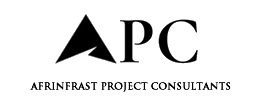
A team of French researchers has announced a breakthrough in the sustainable use of materials in 3D printed concrete, introducing a novel optimisation framework that reduces material use by up to 25%—without compromising structural integrity
The study, led by Dr. Romain Mesnil at École des Ponts ParisTech and published in Automation in Construction, demonstrates that variable layer thickness, dynamically adjusted through robot velocity, can significantly reduce both printing time and environmental impact in additive manufacturing of concrete shell structures.
“This research shows that by leveraging the capabilities of robotic printing, we can move beyond constant layer designs and make data-driven decisions about where material is truly needed,” said Dr. Mesnil. “It’s a step-change toward greener, smarter construction.”
A new dimension in 3DCP process optimisation
The work challenges the status quo in 3D concrete printing (3DCP), where most systems rely on uniform wall thickness due to modelling complexity and lack of real-time optimisation tools.
The team’s model simulates the printing process using a lightweight finite element analysis (FEA) approach based on shell elements, significantly reducing computation time while maintaining accuracy.

Key innovations include:
- A parametric optimisation routine that links process parameters (flow rate, nozzle speed) with material deposition profiles.
- Use of Bezier splines to control thickness gradients across printed layers.
- Integrated numerical convergence analysis ensuring mechanical reliability against buckling and failure.
- Validation through full-scale printing experiments on complex shapes like domes and hourglass shells using a 2K mortar system and robotic arm from XTreeE.
Significant gains in efficiency
Across multiple tests, variable thickness printing achieved:
- Up to 25% reduction in concrete use
- 20% decrease in cost compared to conventional printing
- Greater structural stability during critical printing stages
The hourglass-shaped test showed especially strong gains: variable thickness designs outperformed constant thickness in every performance metric, including material efficiency, time, and cost.
A pathway to scalable sustainable construction
By adopting this optimisation framework, manufacturers can:
- Reduce carbon emissions tied to concrete use
- Accelerate print times and throughput
- Gain flexibility in balancing productivity with environmental performance
The team also introduced a design-to-print workflow compatible with Grasshopper and Karamba (Rhino plugins), ensuring smooth integration into existing parametric design and simulation environments.
The post New study finds 25% material savings through thickness optimisation in 3D printed concrete appeared first on Planning, Building & Construction Today.

